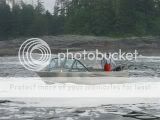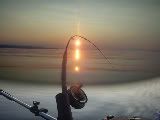quote:
Originally posted by Charlie
quote:Originally posted by Barbender
This is something that I have been following for a long time yet some people on this site have taken issue with it when you point it out. The interception rate out of SEAK has been in my oppinion much too high yet no one wants to acknowledge the elephant in the room. Also the fact that Alaska's fish numbers are not as high as they like to promote.
Hmm… sorry for the hijack, but I just can’t resist?
But, which of the Alaska fish numbers are you referring, would that be “our” or Alaska “Chinook”? If you are referring to Alaska Chinook, they are not reporting “high” numbers? They are actually doing just the opposite… they are screaming bloody murder! Many of their local “Chinook” fisheries have been in a steady decline, for years! If referring to "our" fish from down here taken in Alaska, the below numbers speak! You can convert those number to percentages very easily!
On the interception rates… I guess you need to qualify that one? If you are referring in general, isn’t Alaska interception of “our” Chinook always too high – at least I think so. If you look at the charts, Alaska hits the NBC “ocean” and “stream” and the Upper Fraser “ocean” Chinook – most of the Upper Fraser “stream” are actually “terminal”. However, if you are referring or under the impression SEAK is intercepting and the reason for the “lower” Fraser Chinook decline- you might to be surprised they are not! Most of those fish are indeed intercepted by WCVI, Strait of Georgia, Vancouver, and right in front of the river. But, you might also want to take a “very close” where the highest percentage and most of those fish are taken - look at the “terminal” numbers! I know you are going to hate this, but the whole Fraser watershed is very much in trouble due to “fish farms”, “mismanagement”, “fish farms”, “environmental”, and “fish farms”! And, that does “not” appear to being corrected! If you wish… how about comparing the Fraser fishery, with let us say Puget Sound? The entire state of Washington and Oregon is currently doing very well with all their salmon - record returns, except here in Puget Sound? I am setting here “closed”, with “NO” “NONE”! Hmm now what do the two fisheries have in common? How about “fish farms”? Yep, Puget Sound is the only place that has “all” the Atlantic “fish farms here in Washington! Funny coincidence, isn’t it?
Below are some of those numbers I suggested reading. They not only show the migration routes, but also the predominate interception points! And, as noted… this report was done by UW in 2009!
Back to Oregon? Take a look at their migration and harvest points and you decide if they have a valid complaint? Yep, Oregon gets hit by all of us.
BTW, If you do by chance look up Alaska catch for last year... I think you will find very little reduction over the past years!
Oh, I forgot... remember to covert the numbers into percentages of each individual fishery! The following is an old chart, but it does show what the catch was prior to the recent treaty and I am sure if you take all the numbers and change them percentages for each fishery it will show the before and after the current treaty? Remember if you do that you have to adjust the AABMs?

quote: OREGON COAST CHINOOK STOCKS
Oregon coast Chinook stocks include all fall and spring stocks from Oregon streams south of the Columbia River. These stocks are categorized into two major subgroups based on ocean migration patterns. Although ocean harvest distributions overlap somewhat, they are categorized as either north or south/local migrating. North migrating Chinook stocks include stocks north of and including the Elk River, with the exception of Umpqua River spring Chinook. South/local migrating Chinook stocks include Rogue River spring and fall Chinook, Umpqua River spring Chinook, and fall Chinook from smaller rivers south of the Elk River.
Based on CWT analysis, the populations from ten major north Oregon coast (NOC) river systems fromthe Nehalem through the Siuslaw Rivers are harvested primarily in PSC ocean fisheries off B.C., SEAK and Oregon terminal area fisheries. NOC stocks are harvested to a much lesser degree, in Council area fisheries off Washington and Oregon. Analysis of CWTs indicates the populations from five major mid-Oregon coast (MOC) systems between the Coos and the Elk Rivers are harvested primarily in ocean fisheries off B.C., Washington, Oregon and terminally. Minor catches occur in California fisheries and variable catches in SEAK troll fisheries. South/local stocks are important contributors to ocean fisheries off Oregon and northern California. Another central Oregon stock, Umpqua River spring Chinook, contributes primarily to ocean fisheries off Oregon and California, and to a lesser degree, off Washington, B.C., and SEAK.
Don't you wish DFO could/would do stuff like this? The whole report is here:
http://www.pcouncil.org/wp-content/uploads/salsafe2009_chpII.pdf










